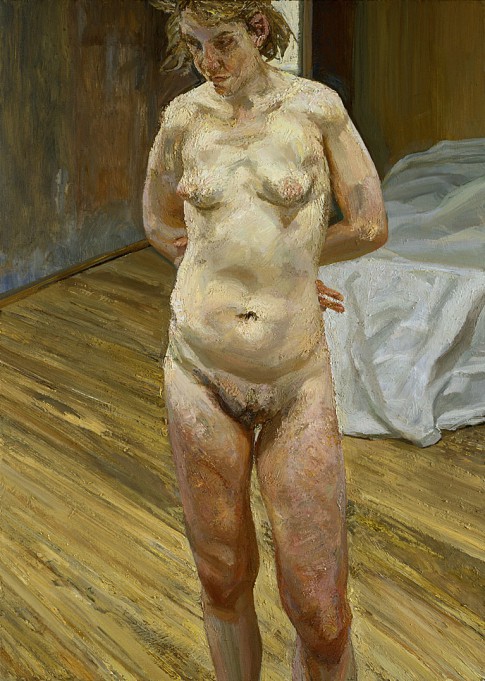Although at one time in my life I collected beautiful paintings of the female form, I can’t profess to be an art critic or someone with enough historical knowledge to be able to cleverly assess the finer side of a painting or its outstanding technical excellence.
Lucian Freud, whose paintings sell for vast sums of money at auctions, is no doubt a genius of some sort but I fail to be carried away by his vision of the human form which I find, in most cases, bereft of any beauty and rather horribly distorted. I could not live with that concept despite its impact, which to my mind stresses more the ugly side of things, transforming beauty into something invariably repugnant.
He often depicted very attractive women in real life, disparaging them, and failing to show their delicate feminine depths; as if the artist had turned ambiguity into a kind of escapism so as to avoid accepting his model’s natural state of bewitching sensuality.
Novelist Julian Barnes, whose talent and sensibility I respect, reviewing two recent works on Freud has written in the latest London Review of Books: ‘His pictures of naked women are not in the least pornographic: nor are they ever erotic. It would be a very disturbed schoolboy who successfully masturbated to a book of Freud nudes.’
I couldn’t agree more. I’m certain, in my youthful vigour, I would never have achieved an erection looking at a Lucian nude, let alone venture to play with myself. Rather, such images would have frightened the life out of me, imagining myself in congress with any of his sitters, if they looked as he had painted them in real life.
I can well understand the surge of the blood vessels to achieve orgasm when even admiring a panoramic view of exquisite and captivating beauty, as was the case with Sir Kenneth Dover, one of the foremost classical scholars of his generation. When I interviewed him in 1998, I asked him about an occasion in 1944, mentioned in his autobiography, when he was so struck by the beauty at the top of an Italian hill, south of Mignano, that he sat down on a log and masturbated; something which he described as ‘the appropriate response’.
I added: ‘Would you say it was principally an aesthetic response or was it more biological or what?’
‘Goodness knows,’ was his reply. ‘All I know is that it wasn’t unique because since my book appeared I’ve heard of other people having similar experiences. It seemed to strike one reviewer as very odd indeed, but it isn’t as odd as all that.’
Which only goes to show that most people are entranced by beauty and seldom by ugliness. Lucian Freud can best be classed as the great arbiter of portraiture deformity, which he saw as perhaps the ultimate in sexual exploration.






